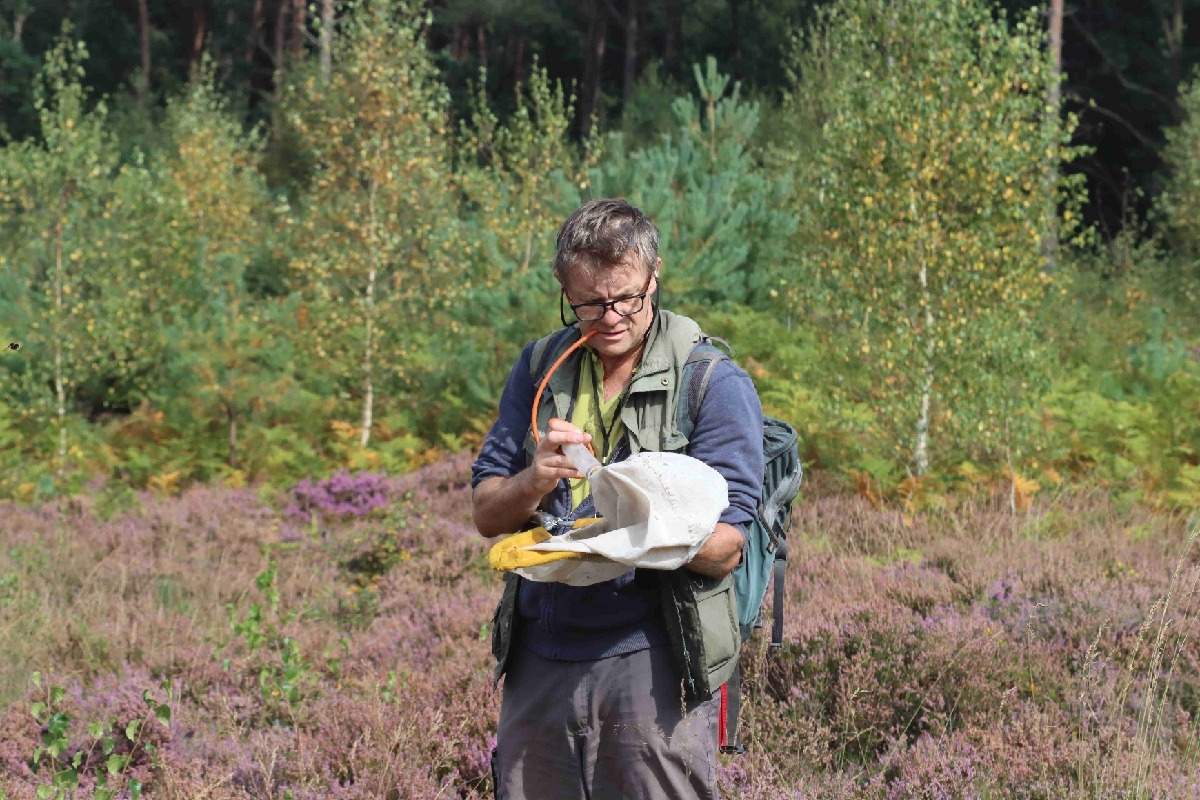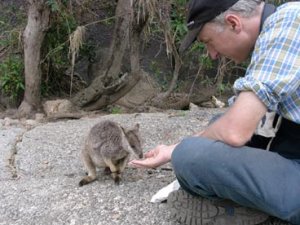- Posts: 12
Hooded Merganser Radipole
Watching Autumnwatch the other day, Bill Oddie spoke as if it were quite likely to be genuine, having been found exhausted in a sluice (the bird, not the birder that is). Lee Evans favours it, but he is more accepting than many.
I think I'll still wait for official confirmation before I count it, but wondered what others thought.
Might also pop down again over Christmas when I'm in the westcountry to see it in its breeding finery, regardless of provenance.
And hey! I'm the first person to post in this forum Whoo Hoo!
Please Log in or Create an account to join the conversation.
- Phil Bull
-
 Topic Author
Topic Author
Firstly, congratulations for being the first on the forums!

It's interesting to see that 27 BUBO Listers have recorded Hooded Merg on their British life lists (BOU). Of these just 5 list the 2000 North Uist bird which is the only one BBRC currently consider acceptable. 10 list the Newbiggin bird (and 2 Woodhorn Flash - the same bird?) which I think is generally assumed to be a likely wild bird and may be accepted by BBRC in due course. 7 count the Dorset bird; I would have thought that many other BUBO Listers would have seen this individual so this may suggest that most consider it more likely an escape, and may not have twitched it for this reason?
I can't really speak about the credentials of the Dorset bird but I'm sure many people do have an opinion - let's hear them here!
Cheers
-- Mike --

Want a signature like this?
Please Log in or Create an account to join the conversation.
The fact that it arrived in an exhausted state and lingered on the drain until fit to fly does hint at a transatlantic arrival, but why hasnt it summered elsewhere as seems to be the case for most nearctic wildfowl.
Am now tempted to go and see it myself.
Please Log in or Create an account to join the conversation.
- Posts: 7
Nowadays things are very often given the 'benefit of the doubt'.
I don't know why there has been such a change.
Please Log in or Create an account to join the conversation.

Please Log in or Create an account to join the conversation.
- Posts: 3
When I saw it I presumed it was an escape, but it's going on my list now!
Why's that Tom? What has swayed your thinking? (I'm not saying you're wrong - would just be interesting to hear your reasoning)
Cheers
Andy Mus.
Please Log in or Create an account to join the conversation.
Not sure if the species comments in that issue offer any clues as to how the recent Radipole and Fife birds might fare. It is noted that they are still relatively common in captivity and that not all future records will necessarily be acceptable just because it's now on category A. Each will be judged on its own merit. The lack of rings will clearly be important and accurate ageing of female types is suggested as possibly helpful.
My approach would be to publish all that are not obviously dubious (so exclude any with rings for a start), age them and then look at the emerging pattern (if there is one) when there are enough records. It's not up to me though!
all the best
John M
Please Log in or Create an account to join the conversation.
- Posts: 16
I went on the way back from a short break in Devon, mainly as its a smart bird, but also as insurance in case the powers that be decide its kosher. Come on the hoodie!
Please Log in or Create an account to join the conversation.
Remember the first Brown Flycatcher? Despite none being known in captivity it was presumed to be an escape.
Ducks of course are a bit more tricky, being popular in collections, long lived and prone to wander unless the wings are clipped (though that didnt stop one Merganser).
Have been reading Martin Garners Frontiers in Birding, and there is a lot of interesting information in it. Not much pertaining to Hooded Merganser though it points out that there are few if any records of juvenile/1st winters in Europe except those that can safely be considered wild (Azores, Iceland). Also its the only north eastern American duck (apart from Wood Duck) yet to make it into category A.
Please Log in or Create an account to join the conversation.
- Posts: 7
Thanks for correcting me John - my excuse is that the October 2008 issue of BB hasn't yet made it here in Bangalore!Just wanted to amend what Mike had said about currently accepted Hooded Mergs. The last BB report on rare birds in 2007 (in the October 2008 issue) has three accepted records: the 2000 Outer Hebs 1w that Mike mentioned plus the New Biggin 1w of March 2002 and the Shetland ad male of April-May 2006.
Cheers
-- Mike --

Want a signature like this?
Please Log in or Create an account to join the conversation.
Don't forget you can get Frontiers in Birding , or any other books, from NHBS via BUBO Listing and at the same time you help support this site with a small commissionHave been reading Martin Garners Frontiers in Birding, and there is a lot of interesting information in it

Cheers
-- Mike --

Want a signature like this?
Please Log in or Create an account to join the conversation.
Turns out now that what Bill said wasn't true, so its origin is now unproven in my mind.
Please Log in or Create an account to join the conversation.
- Posts: 3
Please Log in or Create an account to join the conversation.
Please Log in or Create an account to join the conversation.
- Posts: 2
This link suggests differences in wing patterns, especially the greater upperwing coverts between adult female and immature, the immature having a white bar that is shorter and less even in width here.
www.npwrc.usgs.gov/resource/birds/duckplum/hoodmerg.htm
It's clearly a tiny sample that's shown but presumably the work is based on many birds. Moult might well have a significant effect so not sure if this will still apply to birds in late autumn/winter.
Apart from records of likely vagrants in the Azores (3 up to 2002) and Canary Islands (one in 2002) there are 7 records from Iceland. The latter are of interest re the Portland bird as four of them are highly concentrated in late May/early June. So if like me you were thinking the Portland bird was good because of its age but less good because of its arrival date then you should maybe think again - it actually might be rather good from that point of view. Not so keen on its very long stay though but one of the Iceland birds evidently stayed til the end of September when I guess it probably got rather cold.
They have increased a lot in the E USA too but there are also a lot in collections of course and I expect escapes to be at least as frequent, probably more frequent, than wild birds over here.
all the best
John M
Please Log in or Create an account to join the conversation.
- Posts: 16
I hope it is acceptable for those who've seen it cos it looks pretty awesome on the photos. And anyway, since it's on cat A, in the true BUBO Listing spirit - "Can I tick it? Yes you can!" - your list, your choice.
Please Log in or Create an account to join the conversation.
There is a photo on Birdguides of the Tayport bird doing a wing-flap
www.birdguides.com/pictures/default.asp?...f=184917&r=0&st=0&q=
The greater covert bar appears fairly broad and the white patches seem well defined across c.5 feathers; the tertials look adult-like so presumably the bird has moulted these feathers already.
Difficult to compare with the photos of the specimens though.
Ian
Please Log in or Create an account to join the conversation.
- Posts: 2
Please Log in or Create an account to join the conversation.
Thanks for all these views
 . On balance I think the best approach is go and see the bird if you're in the area and want to see it. Worry about whether it's listable later.
. On balance I think the best approach is go and see the bird if you're in the area and want to see it. Worry about whether it's listable later.The length of my list is decidedly underwhelming, but I cant be the only one who has a private personal list of self found uncountables that I enjoyed seeing & IDing.
Am I going to Tayport specially to see the other one ?
Umm not unless it's still there next time I go to Scotland anyway, I'm afraid.
I may well go again over Christmas to catch the Rad Hoody in breeding costume.
Then of course there's the question of what if it escaped from a collection in the US & then made its own way here, what then ??:ohmy:
Please Log in or Create an account to join the conversation.
- Phil Bull
-
 Topic Author
Topic Author
- Posts: 12
Just one more thing that sprung to mind about this bird - could it be the Hooded Merg that was on the R Stour at Wimbourne Minster (and largely ignored, it seems) from 3-6 Jan this year? Not sure that that would necessarily damn it any more than its eventual learning to take bread after five months at Radipole. It would blow my 'late May/early June is a good time for one to arrive theory' (based on Icelandic records) away though. If the earlier bird was photgraphed or has been aged that might decide it (well if adult then clearly not the same bird).
all the best
John M
Please Log in or Create an account to join the conversation.
- Posts: 16
I am in favour of ticking the Radipole bird.Having been discovered in an exhausted state does give it some credence as having made a lengthy sea crossing.A bird just having made a short flight from the Wimborne area(one reported there in January)is highly unlikely to be in poor condition.Arriving as a 1st Winter drake and unringed does tend to favour the wild bird theory.Sceptics have commented on the birds tameness. I think our American friends can verify that in North America, Hoodies are quite approachable.During its time at Radipole, wanderlust did set it in.It flew the several miles down to Abbottsbury on a couple of occasions.Maybe this was its migration instinct kicking in in its small way? Whatever conclusion is made on this birds status,I can say its one of the highlights of my year, a real stunner. Regards all, Mike
Please Log in or Create an account to join the conversation.
- Posts: 3
Regards
Johnny Allan
www.diporglory.co.uk
Please Log in or Create an account to join the conversation.
I do not know whether the River Stour bird was a 1st. w male.I based my comments on the assumption that a Hoodie flying the short distance to Ferrybridge was hardly unlikely to turn up exhausted.Regards, Mike
Please Log in or Create an account to join the conversation.
- Posts: 3
Kind regards
Johnny Allan
www.diporglory.co.uk
Please Log in or Create an account to join the conversation.
I took it as fact that Bill Oddie was relaying the correct history of this bird on "Autumnwatch".It is a bit disconcerting that the Radipole staff are giving conflicting information.One would have expected an experienced birder like Bill to have the full history before broadcasting on national TV.I think it's a case of waiting to see what the "ten rare men" have to say after reviewing the record.Regards, Mike
Please Log in or Create an account to join the conversation.
- Posts: 3

Please Log in or Create an account to join the conversation.
- Posts: 9
Please Log in or Create an account to join the conversation.
Mark Lawlor wrote: I guess that if it is to be acceptable then it needs to show a bit of migratory urge. Even if it winters in the area, so long as it doesn't stay into next summer then it may be ok - but already its a long stay for a duck in one place I'd have thought. Most long-staying ducks seem to at least wander round a bit.
I hope it is acceptable for those who've seen it cos it looks pretty awesome on the photos. And anyway, since it's on cat A, in the true BUBO Listing spirit - "Can I tick it? Yes you can!" - your list, your choice.
The American Black Duck has stayed put in Scotland for years now. If it's true, that the Dorset Hooded Merganser was found as a 1st summer, exhausted and in a drain, unringed. Why has nobody formally submitted it? Surely it has a case for consideration if the Black Duck has been accepted already?
Please Log in or Create an account to join the conversation.
- Posts: 1
I thought the Radipole Hooded Merganser was submitted, BBRC's decision was 'Not Proven' but also stated "make your own mind up".
Basically, they admitted there was no way of them knowing either way. So they said "Not Proven" (rejected it).
Its still on my list as I feel it should be given the benefit of doubt, but I have seen an accepted one since.
Interesting that at least a couple of birds are currently being reported. I think it is fair to say that at one point, it was deemed unlikely they could make it here.
Please Log in or Create an account to join the conversation.
- Posts: 62





